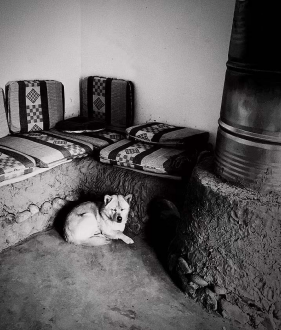The gap between rich and poor during the pandemic
Covid-19 is reopening a rift between economies in the world’s richest and poorest nations, driven by growth rates that are moving firmly in opposite directions.
In the U.S., economists are forecasting a return to boomtime growth levels of the “roaring 20s”; China’s economy expanded at a record 18.3% in the first quarter; and the U.K. is growing faster than at any time since the end of World War II.
Yet across the developing world, where people are largely unvaccinated and governments are unable to afford sustained stimulus measures, economies are falling further behind, struggling to rebound from last year’s record contraction.
The middle class in developing countries, a key engine of economic, educational and political development, is contracting rapidly, but it has barely been dented in the U.S. and China, according to the Pew Research Center. While the rapid U.S. rebound has already catapulted its economy back to growth, lower income countries will take years to return to 2019 levels.
The International Monetary Fund, which calls the dynamic “the great divergence,” warns that many developing economies outside the advanced economies and China could languish for years.
“This has become the inequality virus,” said Amina Mohammed, deputy secretary-general of the United Nations. “The diverging world we’re hurtling towards is a catastrophe.”
Until the economic shock of the virus and lockdowns, the 21st century had largely been a story of the developing world reducing the gap with the developed world in terms of wealth, education, health and stability.
In Latin America, after 15 years of growth powered by commodity exports that lifted millions out of poverty, the economy contracted 7.4% in 2020, the worst downturn since 1821, when the region was immersed in independence wars, the Inter-American Development Bank said in March in its annual economic report.
In central and west Africa, cash-strapped governments are struggling to contain a resurgence of infectious diseases like measles and malaria, which have killed thousands of mostly young children in recent months. In Latin America, well over 100 million children—more than half the total—are out of school, and many are unlikely to return, raising fears of a generation losing the benefits of education.
The World Bank estimates that up to 150 million people will be pushed into extreme poverty as a result of the Covid crunch. The pandemic has led 34 million people to the brink of famine, according to the World Food Program, a record 35% rise in a single year. Anger over surging food prices—so often the harbinger of political change throughout history from the French Revolution to the Arab Spring—is starting to translate into violent street protests from Colombia to Sudan.
News from India, where a world record 400,000 daily Covid-19 infections were officially killing up to 4,000 people a day but likely many thousands more, has fed fear in other unvaccinated regions that they too will be overwhelmed. From Nepal and Iran to Peru and Argentina, health systems are buckling as patients swamp hospitals amid shortages of beds and oxygen. Crematoriums are running full tilt, and new virus variants are advancing faster than overworked labs can track them.
Already this year, more than 1.5 million Covid-19 deaths have been reported globally as the virus has sped through Latin America and parts of Asia and will within weeks surpass the 2020 tally of 1.8 million, according to official tallies compiled at the University of Oxford. In recent months the statistics have inverted: Europe and North America recorded 73% of daily deaths at the turn of the year during a winter surge, but now Latin America, Asia and Africa together account for 72% of deaths.
“It’s a wake-up call for our continent and the rest of the world with poor access to vaccines,” said John Nkengasong, director of the Africa Centres for Disease Control and Prevention, where just 0.4% of the 1.5 billion population has been fully vaccinated.
The vaccine gap between rich and poor is now at its most severe since immunizations against Covid-19 started at the end of last year, according to investment bank UBS. Europe and North American vaccination rates generally range from 30% to 50%.
Many developing economies are also especially dependent on revenue and jobs from hard-hit service sectors such as tourism, which cash-strapped governments can’t afford to protect.
Much of the developing world entered the pandemic with sharply elevated external debts. Overnight lending rates are zero or negative in advanced economies, but they average more than 4% in developing economies, with longer-term borrowing, the kind needed for investment in areas such as infrastructure and education, much more expensive. A number of countries, among them Zambia, Argentina and Lebanon, have already defaulted.
Policy makers warn that the debt burden could force governments to switch into austerity mode, further choking a recovery. Food prices are soaring across parts of the developing world, which is leading central banks to tighten monetary policy to tamp down inflation.

In the U.S., economists are forecasting a return to boomtime growth levels of the “roaring 20s”; China’s economy expanded at a record 18.3% in the first quarter; and the U.K. is growing faster than at any time since the end of World War II.
Yet across the developing world, where people are largely unvaccinated and governments are unable to afford sustained stimulus measures, economies are falling further behind, struggling to rebound from last year’s record contraction.
The middle class in developing countries, a key engine of economic, educational and political development, is contracting rapidly, but it has barely been dented in the U.S. and China, according to the Pew Research Center. While the rapid U.S. rebound has already catapulted its economy back to growth, lower income countries will take years to return to 2019 levels.
The International Monetary Fund, which calls the dynamic “the great divergence,” warns that many developing economies outside the advanced economies and China could languish for years.
“This has become the inequality virus,” said Amina Mohammed, deputy secretary-general of the United Nations. “The diverging world we’re hurtling towards is a catastrophe.”
Until the economic shock of the virus and lockdowns, the 21st century had largely been a story of the developing world reducing the gap with the developed world in terms of wealth, education, health and stability.
In Latin America, after 15 years of growth powered by commodity exports that lifted millions out of poverty, the economy contracted 7.4% in 2020, the worst downturn since 1821, when the region was immersed in independence wars, the Inter-American Development Bank said in March in its annual economic report.
In central and west Africa, cash-strapped governments are struggling to contain a resurgence of infectious diseases like measles and malaria, which have killed thousands of mostly young children in recent months. In Latin America, well over 100 million children—more than half the total—are out of school, and many are unlikely to return, raising fears of a generation losing the benefits of education.
The World Bank estimates that up to 150 million people will be pushed into extreme poverty as a result of the Covid crunch. The pandemic has led 34 million people to the brink of famine, according to the World Food Program, a record 35% rise in a single year. Anger over surging food prices—so often the harbinger of political change throughout history from the French Revolution to the Arab Spring—is starting to translate into violent street protests from Colombia to Sudan.
News from India, where a world record 400,000 daily Covid-19 infections were officially killing up to 4,000 people a day but likely many thousands more, has fed fear in other unvaccinated regions that they too will be overwhelmed. From Nepal and Iran to Peru and Argentina, health systems are buckling as patients swamp hospitals amid shortages of beds and oxygen. Crematoriums are running full tilt, and new virus variants are advancing faster than overworked labs can track them.
Already this year, more than 1.5 million Covid-19 deaths have been reported globally as the virus has sped through Latin America and parts of Asia and will within weeks surpass the 2020 tally of 1.8 million, according to official tallies compiled at the University of Oxford. In recent months the statistics have inverted: Europe and North America recorded 73% of daily deaths at the turn of the year during a winter surge, but now Latin America, Asia and Africa together account for 72% of deaths.
“It’s a wake-up call for our continent and the rest of the world with poor access to vaccines,” said John Nkengasong, director of the Africa Centres for Disease Control and Prevention, where just 0.4% of the 1.5 billion population has been fully vaccinated.
The vaccine gap between rich and poor is now at its most severe since immunizations against Covid-19 started at the end of last year, according to investment bank UBS. Europe and North American vaccination rates generally range from 30% to 50%.
Many developing economies are also especially dependent on revenue and jobs from hard-hit service sectors such as tourism, which cash-strapped governments can’t afford to protect.
Much of the developing world entered the pandemic with sharply elevated external debts. Overnight lending rates are zero or negative in advanced economies, but they average more than 4% in developing economies, with longer-term borrowing, the kind needed for investment in areas such as infrastructure and education, much more expensive. A number of countries, among them Zambia, Argentina and Lebanon, have already defaulted.
Policy makers warn that the debt burden could force governments to switch into austerity mode, further choking a recovery. Food prices are soaring across parts of the developing world, which is leading central banks to tighten monetary policy to tamp down inflation.

(Photoed by Lan Runqing)




